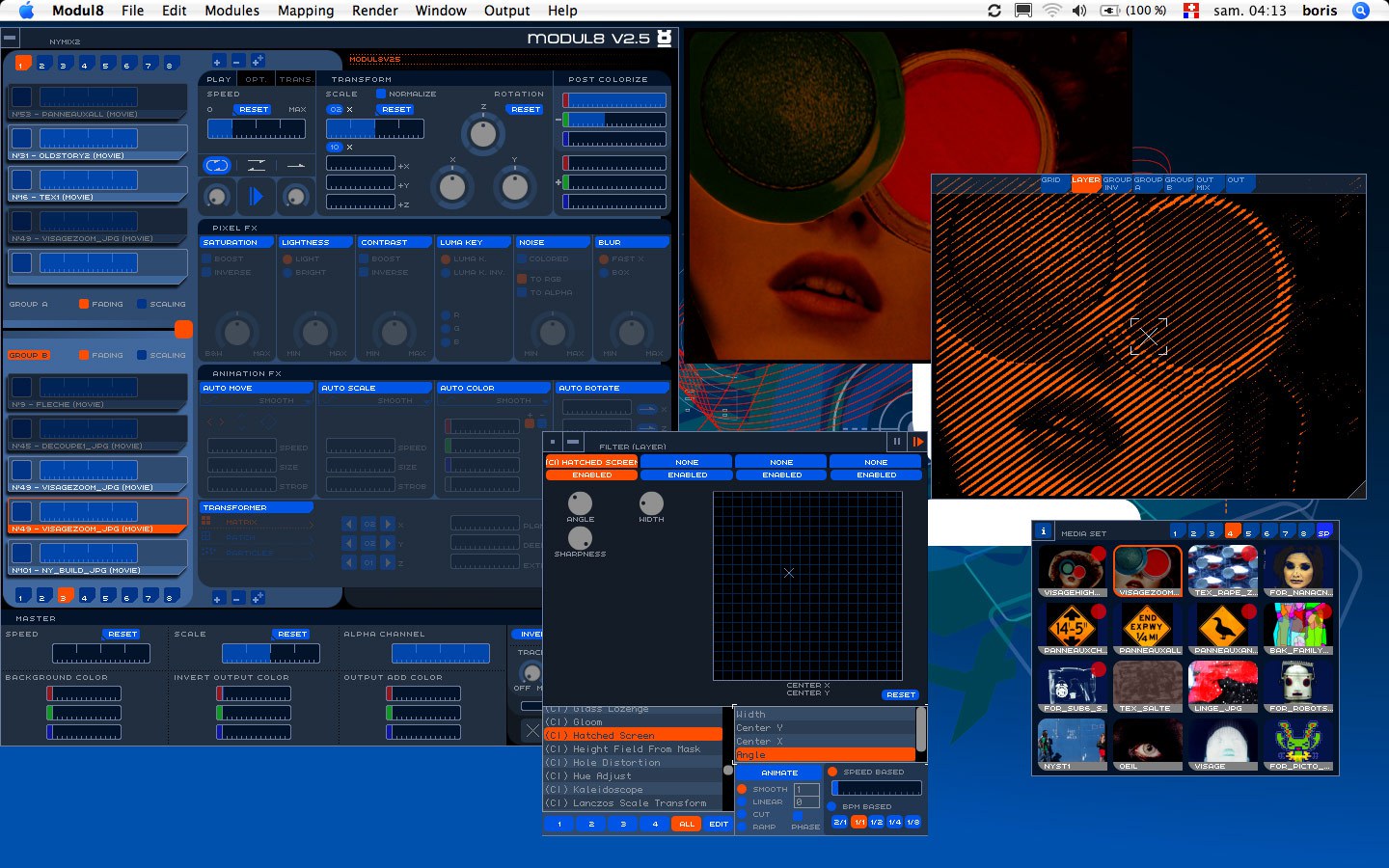


Again, my comments and reflections of this process can be heard in the video on my blog.īoth experiments were a success, as can be seen in the videos on my blog. In a further experiment, I imported a mock-up of a picture frame, this was to see if it was possible to “mask” live video feed layer into a picture frame-as this is necessary, final installed at work. My comments and reflections can be heard in the video below: I experimented with the size of the movies, and perspective of the live “webcam” layer.
#Sofware modul8 movie
In the first experiment, I imported the movie clip into one layer and then imported the live web cam feed to the second layer. Rather than create a lengthy description written here, I decided to use screen capture software, and create a small movie, with commentary, showing my experimentation.
#Sofware modul8 mods
I would recommend stripping it back to one layer and turning all the mods off to get a clearer idea from scratch of how things work.Further to my tutorial with Ricardo, I wanted to get used to the controls of the Modul8 software. I found this quite confusing at first to work out what everything does. One word about the M8 demo though, it defaults to a set containing lots of layers, and lots and lots of modulations turned on. Try the demo of each and see what you think. Speaking of I/O, it will handle up to 8 projectors and 4 camera inputs simultaneously, if your hardware is up to it. Also, live audio input can be assigned to modulate any parameter, including different frequency bands assigned to different parameters. Great MIDI clock integration, any parameter(s) can be auto-modulated by incoming MIDI clock, in whatever amount and beat-division you wish. (I have them on separate computers for gigs though just to be sure, but I'm really impressed with how smoothly they both work on one machine with pretty complex sets on each - I could imagine if you were doing a more basic DJ-type set from Live, and not using too many layers simultaneously in M8 you could very happily run both off one machine, live.) I can build my video show all on the one machine with Live sending MIDI to modul8 via the IAC bus. It plays sweetly with Live on my 4 year old MBP. You can map each of the 10 layers of video simultaneously to a different shape if you wish, so its easy to map on to 3-D objects in physical space. I use it to assist with lining up to a screen - no need to futz around with keystone correction - just shoot a little bit wide with your projector, and pin each corner of the image on to the corners of your screen in the software. The MapMapMap module is awesome, it lets you map the geometry of your output to any surface. This can also function as a "video looper" as you can switch seamlessly between live manipulation and "Logical Record" playback. Modul8 has a nifty "Logical Record" function that I've been using a lot: You can record your performance for as long as you like with no CPU hit, and render it out later at whatever codec/size/frame-rate you need. Modul8's MIDI capabilities are very similar to Lives: hit shift-apple-M to assign MIDI notes/controllers, or shift-apple-K to assign QWERTY keystrokes to any parameter or clip. If you're keen you could build your own if you want a specific device/plugin/interface. There are currently around 100 user-made modules in the online library that anyone can use. One nice thing about modul8 is that it's er. I've never used GrandVJ, but I have modul8 and I love it!


 0 kommentar(er)
0 kommentar(er)
